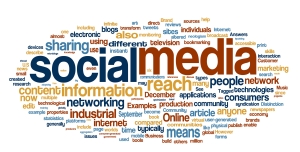
I’m Alexander Beauford, a senior at the University of Indianapolis and the new intern for Shank Public Relations Counselors, Inc. Although it’s been a few weeks since our last post, we are back and prepared for an exciting new four-part series on social media. I’m in the Principals’ Office to begin part one where I sit down with President David Shank, APR and Vice President Marilyn Shank, APR to discuss the current social media landscape.
As news becomes more and more real-time, and the message becomes condensed into 140 characters, one might ask just how sound bite-like information can help your company in a crisis? In a recent Public Relations Society of America article, author and public relations professional Melissa Agnes analyzes the Boston Police Department’s social media reaction to the Boston Marathon bombings. Agnes says there should be a plan when a crisis arises. Although Boston PD had no detailed social media plan, they did an excellent job communicating a consistent message across all platforms, especially Twitter. The police department was able to get public safety information to their nearly 300,000 followers, reducing significantly the number of casualties, injuries and the possibility of widespread panic.
According to David Shank, “there are always potential downfalls, but social media is a good tool to use during a crisis. The goal is to allay people’s fears with accuracy.” He added that you are able to discredit rumors and confirm things that are true. Additionally, Shank says that monitoring tweets can lead to knocking down false information. At the same time of the marathon bombings, there was a separate explosion at the Kennedy Library in Boston. A library employee was monitoring the Twitter feed and confirmed the library blast was a separate issue not caused by an act of terror.
Conversely, social media can get you into trouble. During the 2012 presidential election a member of the KitchenAid social media team sent a tweet dispraising The President from what he thought was his personal Twitter account. Turns out, it wasn’t. The tweet was sent from the official KitchenAid Twitter account which nearly caused a huge controversy. Not only was the tweet sent from the official account of a strong household brand, it used the hashtag #nbcpolitics. Thousands were subject to viewing the tweet.
“@KitchenAidUSA Obamas gma even knew it was going 2 b bad! She died 3 days b4 he became president. #NBCPolitics”
Marilyn Shank says although it is more difficult, it is vastly important to double and triple check tweets. It is more difficult because of the turnaround time of Twitter; once a tweet is sent anyone can view it. She also says that since tweets are sent in real time, so should your responses. “Analyze who follows you on Twitter and ask yourself if they are truly your key publics/stakeholders, you never want to over respond,” said Marilyn.
In analyzing who these followers are, you can craft your message so it is strategic, yet sincere. Thanks to skillful public relations professionals, KitchenAid recovered before irreversible damage was done, sending a succession of tweets to President Obama and everyone on Twitter:
“Deepest apologies for an irresponsible tweet that is in no way a representation of the brand’s opinion. #nbcpolitics”
“I would like to personally apologize to President @BarackObama, his family and everyone on Twitter for the offensive tweet sent earlier.”
“It was carelessly sent in error by a member of our Twitter team who, needless to say, won’t be tweeting for us anymore.”
These tweets are the result of quick-thinking public relations minds. Not only did KitchenAid reverse the problem by formally apologizing, they ensured it never happened again by relieving the tweeter of his duties. David Shank says that because of the breadth and coverage of the medium, someone needs to be constantly fact checking and making sure tweets accurately represent a company’s brand.
Marilyn Shank, David Shank and Melissa Agnes agree that having prepared communication in a crisis situation is vital. Addressing the issue head-on is also important, if KitchenAid had not done so, an incident of this magnitude could lead to negative brand association or even long-term profit loss. Owning up led to a number of positive tweets defending KitchenAid:
“@kitchenaid had a tweet incident that MANY companies have had. Shout out to the bigwigs for owning up & apologizing on behalf of the brand.”
And…
“Get off Kitchenaid’s back. Most of you who were too cool for the debate are having a field day with this. Let’s keep our eye on the ball.”
The dynamic of crisis communication is drastically changing as technology develops. Years ago, you had weeks, then a week, a few days, 24 hours and most recently a matter of minutes or seconds to respond to a crisis. Simply put, crisis communication has undergone a radical pattern shift. And now that information is more readily available it is important to present it accurately. So in the words of Walter Cronkite-consider this, “We want to be first, but we want to be right first.”

